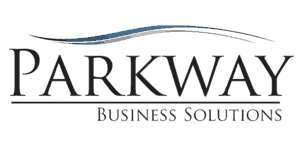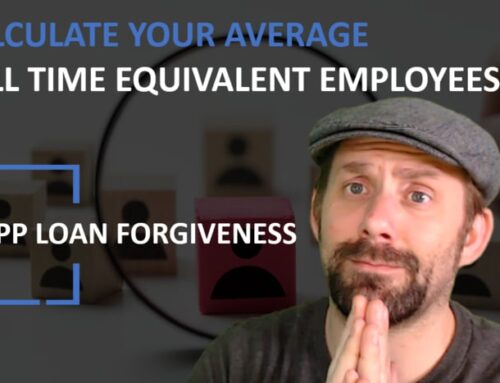QUESTION:
What if the normal work week is 35 hours?
Last Updated 07.08.2020
SUGGESTED INFORMATION:
If all employees only work 37.5 hours during the Reference period (Lookback Period) as well as the covered period, then there would be no change in FTE count when using the Simplified FTE calculation. IF you reduced the number of staff, you would have a reduction to total FTE that would need to be addressed.
QUESTION:
How does the calculations work for a self-employed employer who also have payroll?
Last Updated 07.08.2020
SUGGESTED INFORMATION:
If a self-employed individual also has employees on payroll, they will calculate the average payroll cost for all employees as normal + the equivalent wages for the owner based on 2019 net profit. All employees’ wages are capped at $100,000 per employee. If the loan was received before June 5th, they can select between an 8-week covered period or a 24-week covered period. See below for the different formulas based on the selected covered period for employees and owners.
8 Week Period (Owners or Employees):
The total forgivable amount is capped at $15,385 = (8/52 weeks x $100,000).
24 Week Period (Owners):
The total forgivable amount is capped at $20,833 = (2.5/12 months x $100,000).
24 Week Period (Employees):
The total forgivable amount is capped at $46,154 = (24/52 weeks x $100,000).
QUESTION:
Is the Alternative covered Period on for employers with bi-weekly or weekly payroll?
Last Updated 07.08.2020
SUGGESTED INFORMATION:
How does the calculations work for a self-employed employer who also have payroll?
If a self-employed individual also has employees on payroll, they will calculate the average payroll cost for all employees as normal + the equivalent wages for the owner based on 2019 net profit. All employees’ wages are capped at $100,000 per employee. If the loan was received before June 5th, they can select between an 8-week covered period or a 24-week covered period. See below for the different formulas based on the selected covered period for employees and owners.
8 Week Period (Owners or Employees):
The total forgivable amount is capped at $15,385 = (8/52 weeks x $100,000).
24 Week Period (Owners):
The total forgivable amount is capped at $20,833 = (2.5/12 months x $100,000).
24 Week Period (Employees):
The total forgivable amount is capped at $46,154 = (24/52 weeks x $100,000).
Additional related questions:
Can you clarify the maximum amount of wages a sole proprietor may pay with the PPP? Max is $15,385 for 8 weeks (max of $100k per year).
Does the 24-week period allow for any more than 2.5 of annual ?
Does the 2.5 rule apply no matter if 8 weeks or 24 weeks ?
SUGGESTED INFORMATION:
If a partnership also has employees on payroll, they will calculate the average payroll cost for all employees as normal + the equivalent wages for the partners based on 2019 net earnings. Partnerships are not allowed to include retirement or health insurance contributions for the partners since they are already included in their net self-employment income. Since the draws should have been reported on the individual net earnings reports, they will be included when calculating the total cash compensation for the period.
All employees’ wages are capped at $100,000 per employee. If the loan was received before June 5th, they can select between an 8-week covered period or a 24-week covered period. See below for the different formulas based on the selected covered period for employees and owners.
8 Week Period (Owners or Employees):
The total forgivable amount is capped at $15,385 = (8/52 weeks x $100,000).
24 Week Period (Owners):
The total forgivable amount is capped at $20,833 = (2.5/12 months x $100,000).
24 Week Period (Employees):
The total forgivable amount is capped at $46,154 = (24/52 weeks x $100,000).
QUESTION:
Is the EIDL Advance still going to reduce loan forgiveness?
Last Updated 07.08.2020
SUGGESTED INFORMATION:
All funds received as an advance of the EIDL will be rolled into your PPP Loan by the SBA. For example:
If you applied for the EIDL advance before applying for the PPP but did not receive notification of the EIDL before submitting your PPP loan documents then your advance will still need to be added into your total loan amount by the SBA
Example 1:
- PPP Loan Amount = $100,000
- EIDL Advance = 5,000
- Payroll Expenses = $70,000
- Non-Payroll Expenses = $30,000
Assuming all other aspects of loan forgiveness has been met, the amount due on the PPP Loan would be $5,000 just the advance amount.
Example 2:
- PPP Loan Amount = $100,000
- EIDL Advance = 5,000
- Payroll Expenses = $55,000
- Non-Payroll Expenses = $30,000
Since you did not meet the 60% minimum of payroll expenses , and assuming that all other aspects of safe harbor have been met, your loan forgiveness would look like:
Max forgivable loan amount: $ 55,000 /0.60 = $91,666.67
Payroll Expenses: $55,000.00
Non-Payroll: $36,666.67
Remaining Balance of Loan to be repaid: 100,000 – 91,666.67 = $8,333.33
Total PPP loan balance including EIDL Advance $8,333.33 + $5,000.00 = 13,333.33
Final Total Due: $13,333.33
Additional related questions:
Is the advance amount from EIDL automatically deducted from the forgiveness amount, even though the advance was used for nonpayroll expenses?
QUESTION:
Can self-employed deduct health insurance?
Last Updated 07.08.2020
SUGGESTED INFORMATION:
No.
Schedule C or F filers are capped by the amount of their owner compensation replacement, calculated based on 2019 net profit
For self-employed individuals, including Schedule C or F filers and general partners, retirement and health insurance contributions are included in their net self-employment income and therefore cannot be separately added to their payroll calculation.
QUESTION:
Is the Alternative covered Period on for employers with bi-weekly or weekly payroll?
Last Updated 07.08.2020
SUGGESTED INFORMATION:
Covered Period:
- The covered period starts once the first PPP funding is deposited into the businesses account. If there are multiple PPP payments, the covered period still starts once the first funds have been received. Eight-week (56-day) period.
Alternative Payroll Covered Period:
- Borrowers with a biweekly (or more frequent) payroll schedule may elect to calculate eligible payroll costs using the eight-week (56-day) period that begins on the first day of their first pay period following their PPP Loan Disbursement Date
For Table 1, is the average FTE for the whole year for 2019?
Table 1 is used to calculate and document the:
- Cash compensation,
- Salary / hourly wage reduction
- FTE value (Avg number of hours worked per week during the Covered Period or Alternative Payroll Covered Period/40 ) *round answer to nearest tenth.
Only list employees that received compensation during your chosen period (Covered Period or Alternative Payroll Covered Period)
Table 1: List employees who:
- Were employed by the Borrower at any point during the Covered Period or the Alternative Payroll Covered Period whose principal place of residence is in the United States; and
- Received compensation from the Borrower at an annualized rate of less than or equal to $100,000 for all pay periods in 2019 or were not employed by the Borrower at any point in 2019.
What if the normal work week is 35 hours?
If all employees only work 37.5 hours during the Reference period (Lookback Period) as well as the covered period, then there would be no change in FTE count when using the Simplified FTE calculation. IF you reduced the number of staff, you would have a reduction to total FTE that would need to be addressed.
If the PPP Loan Forgiveness Form 3508EZ asks that you enter the smallest of Lines 5,6, and 7 onto Line 8, would this mean that loan forgiveness would be limited to 60% of Payroll Costs even if 100% of PPP Loan Amount was spent on payroll (Line 6)
After reviewing the 3508EZ form the first time, I too thought Line 8 would limit the amount of forgiveness. Upon further review, this is what I noticed:
Enter the smallest of lines 5,6,7:
Line 5: Combine the total Payroll (Line 1) and Non-Payroll (Line 2-4) Expenses. If this number were the lowest number that would suggest that you did not spend the entire amount of your PPP loan.
Line 6: The PPP Loan Amount. If this is the smallest number, this means your payroll expenses exceeded your loan amount and loan forgiveness is expected
Line 7: Total Payroll Costs/0.60 = Another way to look at this calculation would be to say “Based on my total payroll costs, I would meet the 60% payroll requirement for a loan up X amount.
Let us assume that the PPP Loan was for 100,000
Our Payroll expenses were 80,000
Non-Payroll expenses were 10,000
These would be your line totals:
Line 5: 80,000+10,000 = 90,000
Line 6: 100,000
Line 7: 80,000/0.60 = 133,333.33
This means your maximum loan forgiveness would be $90,000
What happens if you use less than 60% of the loan on payroll?
If a person uses less than 60% of the funds toward payroll expenses, the total amount of potential loan forgiveness will be reduced to the point where the 60% threshold has been met. For example
PPP loan amount = $100,000.00
Payroll Expenses = $50,000.00
Non-Payroll Expense = 40,000.00
The original 60% threshold required at least 60,000 to be spent on Payroll.
Since we only spent $50,000.00 on payroll our max loan amount that would meet the loan threshold would have been $50,000/0.60 = $83,333.33
Based on the max loan forgiveness amount: $83,333.33
Payroll Expenses: $50,000.00
Non-Payroll Expense: $33,333.33




